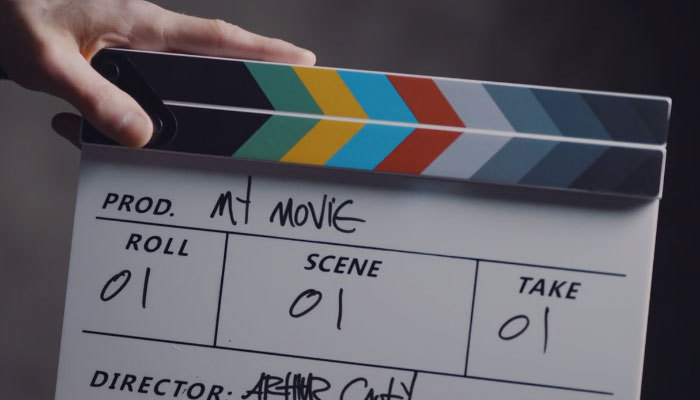Today we’re talking with Eddie Hamilton, ACE, about Mission: Impossible - Dead Reckoning.
Eddie was last on Art of the Cut to discuss Top Gun: Maverick, which was the most listened-to episode of the last year. He’s also talked with Art of the Cut about Mission Impossible: Fallout, Kingsman: The Golden Circle, Mission Impossible Rogue Nation, and Kingsman: Secret Service. I think that’s enough enormous blockbusters, but I’ll also throw in Kickass, Kickass 2, X-Men First Class, and even Resident Evil: Apocalypse almost two decades ago.
Mission Impossible Dead Reckoning
I enjoyed this movie so much. I went with my family, and it just flew by. I honestly felt like it was an hour long. The pacing was fantastic.That's so kind of you to say. We work to make sure that that's the end result. We're very sensitive to audiences telling us when things are too long, so we really compress it as much as we possibly can to get the pace as smooth as possible.
It definitely shows. I would love to hear about the process. This is not a one-and-done thing. Maybe it was too long at some point. What was the length of the editor's cut?I think it's very important to, as you say, trust the process – something I've heard you say a lot, Steve. It's important for everyone involved in the process to understand that everything starts out too long, boring, baggy, unfocused, and a bit of a mess, quite frankly.
It takes a lot of work to get stuff effortless to watch and enjoy. I think we started out with a cut that was around 4:20, anything that they shot – where I felt that there's something in there, I don't know if it'll be useful – stick it in the timeline.
Of course, I was keeping [director] Christopher McQuarrie updated as we were shooting saying, "Look, the movie's 2:30 now. Now it's 3:30, now it's 4:00."
The producers don't want to hear that, but I said, "Guys, it's going to be fine. We're going to get it down."
We have some deleted scenes, but not a lot. A lot of it was just fat, and compression and ideas that they were trying out on location. Then in the fullness of time, we look at the movie and discover what is essential.
We finished Top Gun: Maverick at the end of July 2020. Then I had a month off. Then we started working on Mission: Impossible at the beginning of September 2020. Now it’s July 9th, 2023. We finished the movie two weeks ago. It was well over two and a half years of work, nearly three years of work in total.
I was working on the edit every day. I had a week off at Christmas both years, and that was it. My whole team has been working flat out. We have also been filming a good portion of the next Mission: Impossible movie in that time, as well.
Last year, for example, I spent about five months in South Africa where Tom [Cruise] and Christopher McQuarrie were filming the climactic aerial sequence for Part Two. You might've seen a very short clip of Tom Cruise standing on a biplane introducing the screening of Top Gun: Maverick that we did at CinemaCon in Las Vegas in April 2022. Tom wanted to do a very dynamic introduction. It's stomach-churning when you watch it.
That was filmed on the way home from one of our shoot days. This sequence has more stunts than almost the entire rest of the movies put together. Not exaggerating. Tom was risking his life every day for months – astonishingly dangerous, dynamic, physical, and real.
When we were shooting that, for example, the edit of Part One was sort of on the back burner as I was assembling all this footage from Part Two. We filmed other pieces of Part Two, which we had to do because of cast availability. We worked for seven or eight months in total on Part Two out of this nearly three-year process of Part One.
I took a week before Christmas '21 and went to New York to work with Chris McQuarrie. In January '22, I took two weeks and went to Florida to work with Chris. In the summer of '22, we took about six weeks and went to Maine where Chris has quite a few friends. We rented a house, set up my laptop with my big 160-terabyte hard drive and chipped away at it.
At Christmas, we worked on the airport sequence. In January, we worked on the train sequence. In the summer, we worked on the desert, Rome, and the sequence in the Department of National Intelligence, which is that big, long dialogue scene where the guy walks in with a suspicious briefcase.
Earlier this year in March 2023, we went and shot on an aircraft carrier. We went to the Oscars and then we went to the Arctic. We went to Svalbard – this tiny island, the northernmost inhabited part of planet Earth apart from the North Pole. We were filming out there in the Arctic.
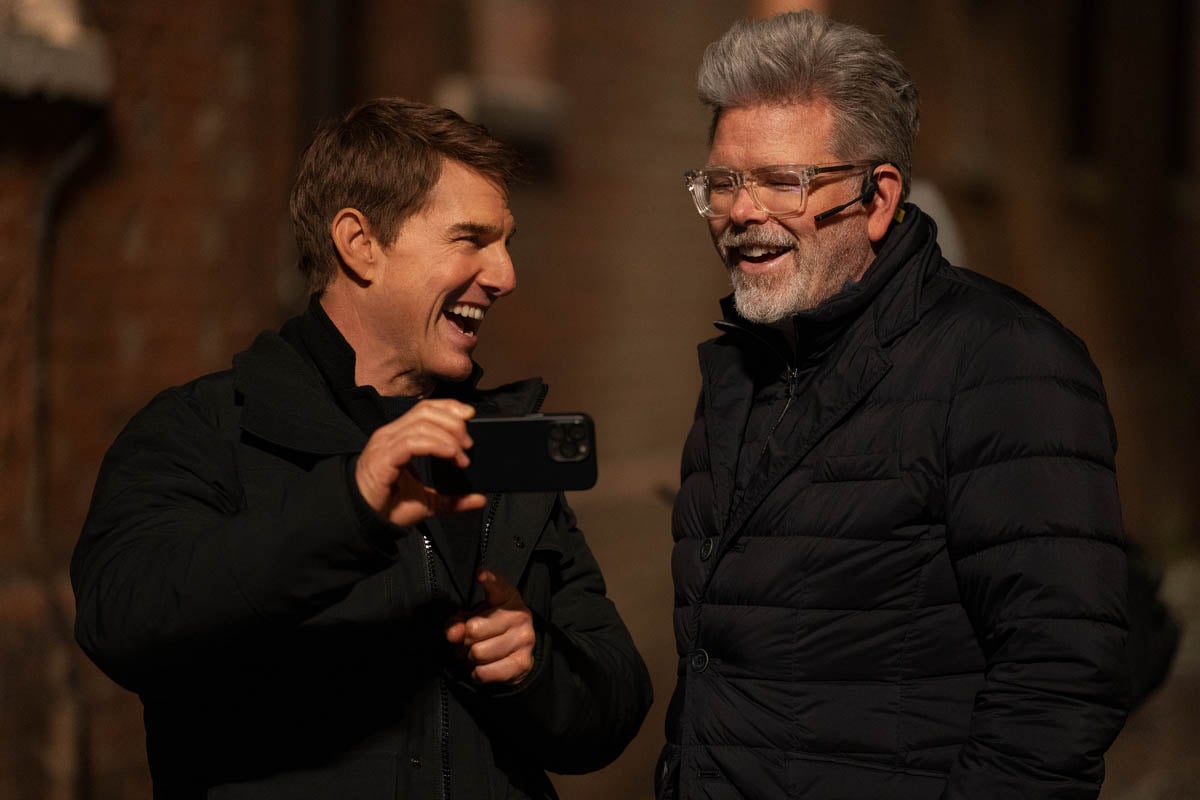
Tom Cruise and director Christopher McQuarrie.
We called it March Madness because we were going all over the world and doing so much. Then, we had April, May, and June to dive in and do our test screenings. Our first friends and family screening was pretty hairy. In October '22, that was the first time anyone on the planet had ever watched the movie from beginning to end.
Chris and I had been working on pieces of it. What Chris likes to do – which I shudder in horror at – is invite 50 friends to come and watch the movie in whatever state it is in. Some of them are filmmakers such as Edgar Wright and Joe Cornish. Quite a few screenwriters that Chris knows and random friends came. We screened the movie. At that point, it was nearly four hours long. That is an hour and 20 minutes longer than the final cut.
There's no music, so it's totally dry. There are barely any sound effects because Chris likes the sound to be really good or to have no sound because he thinks it's distracting if the sound is average, which I agree with.
The large chunks of the movie – the running around Venice and the fighting – were totally silent and much longer. They shot so much of the running around Venice alleyways. I mean, it went on forever.
If you've ever sat down and watched a film with just dialogue – even a lot of the dialogue was totally mute and had no sound effects – it is quite a spiritual experience in some ways because it's very pure. It's just visuals and emotions from the dialogue, and you're not being steered at all.
That's what Chris likes to do. Chris warned everybody – unfinished visual effects shots, that were very long, no music. He won't be offended if you fall asleep.
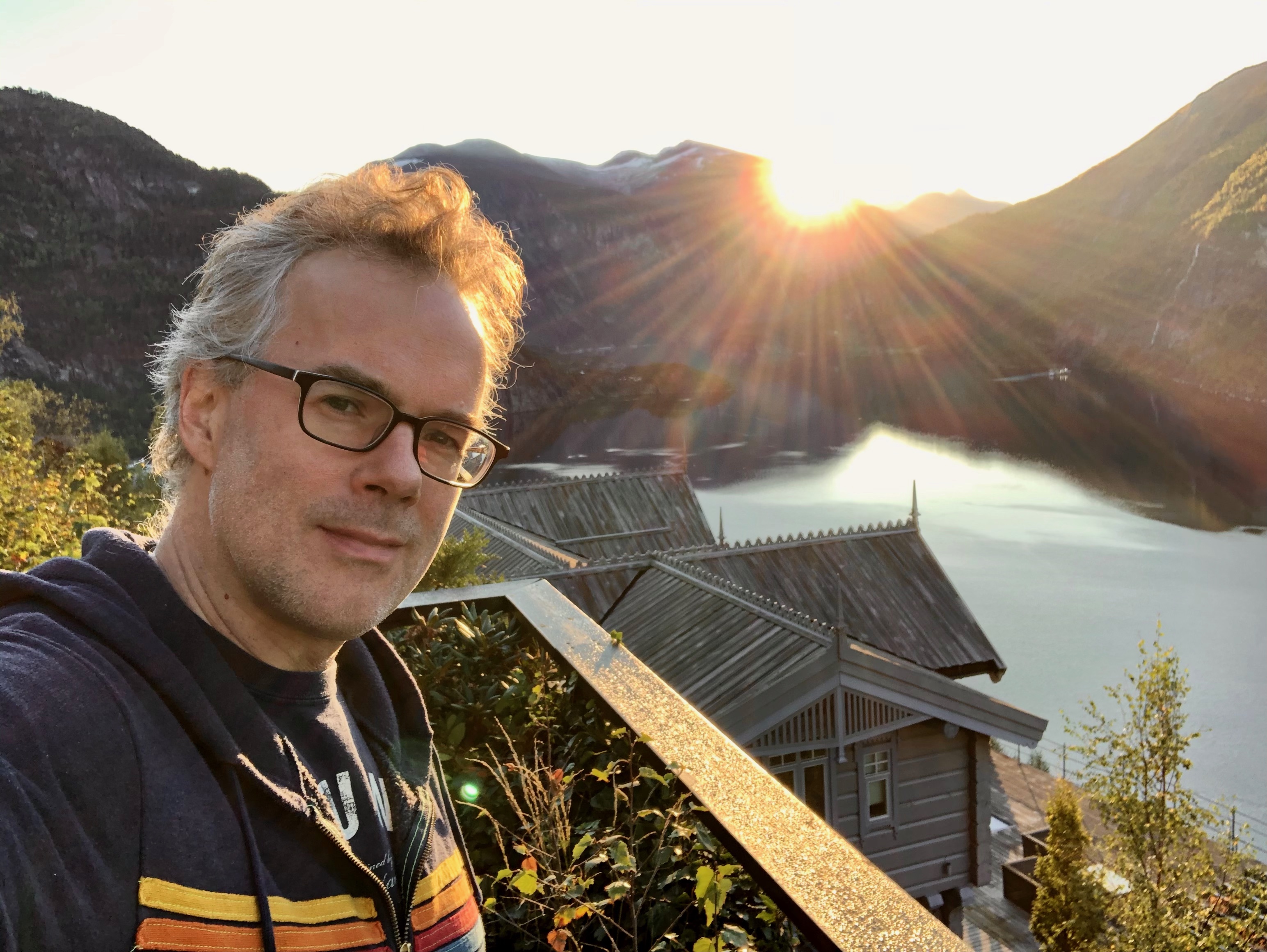
Eddie Hamilton, ACE, courtesy, obviously, of Eddie Hamilton.
We stopped after two and a half hours, which was the end of Venice. Everyone had a bathroom break and a drink. Then we all came back in and watched another hour and a half, which was the train sequence. For better or for worse, we watched it in whatever condition it was in – loads of green screens and all that.
The good news was at that point that there wasn't really much confusion, or at least everyone there said, "We can see where this is going, and you've clearly got a lot of work to do, but you will get there." Then, we did three full cold-recruit audience previews – and learned a lot from those.
Tom and McQ lean into that process. They really embrace it. We did get some feedback where people were really confused about this or that.
I'll give you an example. It was the biggest thing we discovered from our first preview – and you as a filmmaker and everyone listening to this will understand. At the end of Venice, after the scene where Grace is offered the choice to join the team, she says "Can I think about it?" Benji replies, "The train leaves in a couple of three hours."
Then there was the scene between Ethan and Luther, and at the end of that scene, they both got darted. The camera swung around, and you saw – we called her – the "Gray Widow," which was Grace in the Widow mask.
You realize that she was going on the train on her own in the mask and trying to figure out her own destiny without the team. The audience flat-out rejected that because they felt Grace outwits Ethan one time too many in the film.

She gets away from Ethan in the airport. She handcuffs Ethan to the car at the end of Rome. Ethan is foolish enough to trust her at the end of Venice. Then, she does this thing on her own. People just didn't really buy into that. They didn't like the fact that she outwitted the team. They didn't like the fact that Ethan looked stupid. They weren't really with her on the journey of the final act of the movie.
We listened to that. We thought, 'Okay, we've gone too far here.' We reshot that scene where the mask machine breaks. Ethan tells her, "You are gonna have to go on the train on your own and Benji will figure out a way that I can jump on the train."
It was quite a challenge because we – McQ, Tom, and I – spend a day or two days after each preview poring over all the feedback, really putting our heads together about how we can fix a problem like that. It is quite a challenge because it's only a day of pickups, but you need the whole cast.
Rebecca Ferguson is on Dune. Simon Pegg is on something else. Ving Rhames is in LA. It's quite a big undertaking to bring everybody back just for one day of filming, but we had the full support of Paramount Pictures and the HODs [heads of departments, like cinematography, sound, production design, costumes]. They all understood that this was a great solution to the problem the audience pointed out. The audience was marking us down considerably for the third act of the movie. They were very positive about the first two acts. There were problems with the beginning, which we figured out. The middle was working very well.
People said, "It's a bit long." When people say something's a bit long, you just have to confront every shot and every emotional beat in that sequence and ask, "Is it essential?" Then you have to take out anything that isn't.
What Tom said to us is, "You always have to leave the audience wanting more throughout the movie." That's so important because any movie over two hours is a rich meal. If a movie's over two and a half hours, it's a very rich meal. So, you want each course not to fill you up. Quite frankly, you want to still have room left to enjoy the rest of the movie.
At the beginning, when you're working with a four-hour movie, it feels very unwieldy and almost an overwhelming challenge – a huge mountain to climb. How are we ever going to figure out how to get this down? How is it ever going to flow effortlessly and be fun to watch?
After each preview, we slowly got the runtime down. On our third preview, people were still telling us that bits were too long. So, we went into the Rome car chase, especially the bit where they're in the BMW. We cut out about half of that cause people have seen Tom driving in a BMW before. They haven't seen him driving, handcuffed to someone else with one hand… but, let's get onto the Fiat because that's the really fun sequence.
We were brutal. McQ and I are building a deleted shots reel just set to music, which we will put on the home entertainment special features. You will get to see all the stuff that we cut out. Some of it is in trailers. If you watch some of the trailers, you'll say, "Wait, that wasn't in the movie."
That's because we have to be brutally honest with ourselves going through the film. You know this. Everyone listening should know this. If it can go, it must go. It's as simple as that.
The art of editing is compressing the maximum amount of story in the shortest possible time, especially with modern audiences. I certainly learned that… if you watch the original 1986 Top Gun and our 2022 Top Gun: Maverick, the paces of the aerial sequences are much tighter in terms of editing.
If you show people the original Top Gun now, it does feel kind of slow. Even though it's legendary, it's still a bit slow for today's audiences. So, we are in the process of collapsing time as much as possible so that the audience doesn't drift away.
I think the first version we screened for an audience was about 2:57. Then we got it down to 2:52, and then to 2:46 without credits. With the brutal last compression pass in the last two weeks of editing at the end of May 2023 we got another ten minutes out. So, 2:36 without credits.
Honestly, if you had asked any of us when we were watching the four-hour edit if we would ever get it down to 2:36, we all would've scratched our heads and been very puzzled about how we would find our way there. You trust the process, and you listen to the audience very carefully.
We did four friends-and-family screenings and three full previews. I always invite my close editing buddies to the last friends-and-family because I want them all to stab me in the front. At that point, we've got two weeks to go of the actual creative editing. We've been sound mixing the whole time, but the deadline is approaching.
To all my buddies I invite, I say, "You guys, you've got to stab me in the front with all sincerity. I just need to know everywhere that you felt the air in the movie – anywhere that felt bumpy, where you were knocked off the ride, or it didn't feel effortless to watch."

Believe it or not, even after our last friends-and-family screening, we built a set and reshot Ethan's introduction because what we had didn't work. Some version of that will be in the next movie, so I'm not going to tell you what it was, but we needed to radically simplify Ethan's introduction.
McQ had this great idea of using the gig economy: a food delivery guy coming in – which is so of-the-moment with companies like DoorDash and Deliveroo flourishing today.
Ethan gets a mythical introduction with him stepping out of the shadows. Then the delivery guy says, "What is the oath?" This whole IMF oath is something that we invented for this movie, but again, it feeds into our efforts to re-mythologize the Impossible Mission Force for a lot of people who would never have seen any of the other Mission: Impossible movies.
In our test screenings, over half of the audience had not seen any other Mission: Impossibles before. We knew there was an untapped audience out there, but because of the enormous goodwill from Top Gun: Maverick, we knew that Tom's certainly right up there with the biggest stars in the world, if not the biggest star in the world.
There will be a lot of people who watched Top Gun and were reintroduced to Tom, or even introduced to Tom for the first time if they're a younger audience, who might be interested to check this film out on the big screen. We wanted to re-mythologize the IMF and give Ethan a very simple introduction.
We used to have a much more ambitious mission briefing, but we wanted to keep it super simple with just photographs – very analog and appropriate for this movie. Of course, the self-destruct happens inside the food delivery bag, which is quite fun.
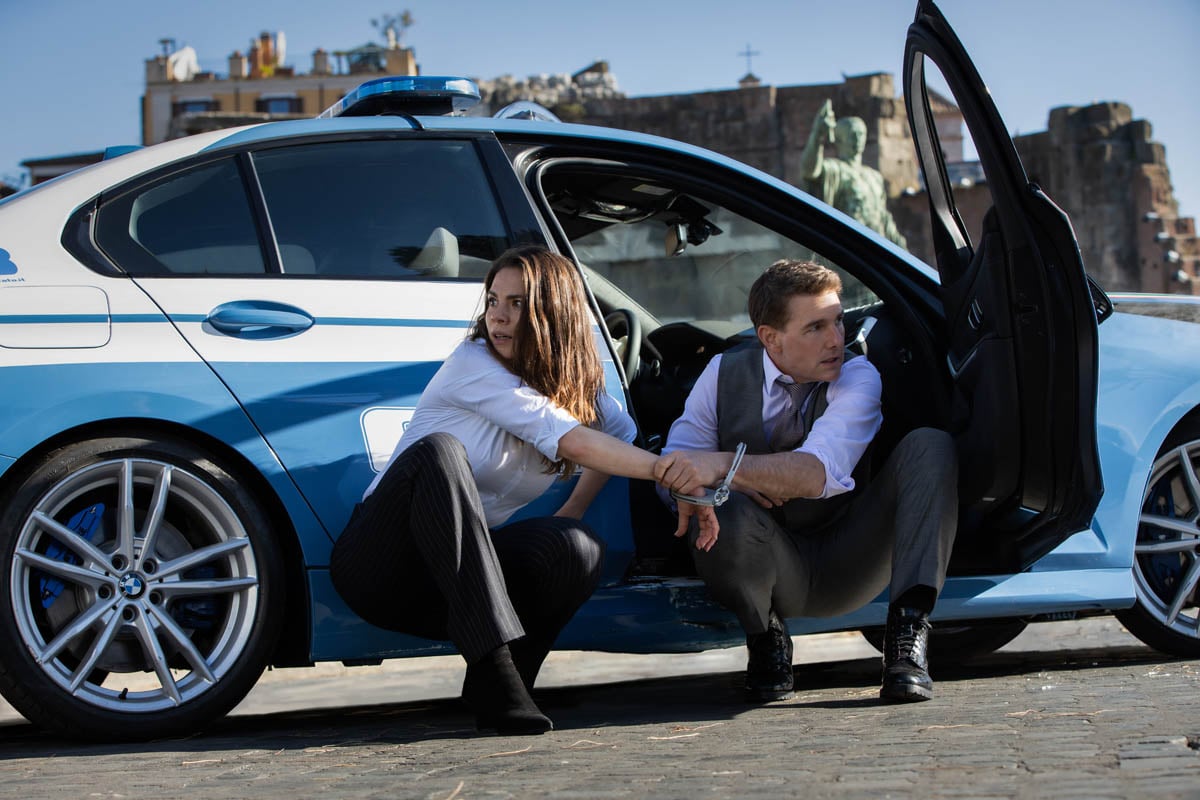
If you watch the original show, part of the fun of it was always, 'How is Jim Phelps or Dan Briggs ever going to get the mission?' He is going in a record shop, he is going to meet somebody on the roof of a building, or he is going into a subway. It was always fun. So, the introduction to Ethan was simplified down to a very short scene to get us to the desert quicker, which is where the action with Ethan and Ilsa kicks off.
Tom said, "It's got to feel like a rocket ride." Even though we take our time where we need to, you've just got to be leaning in the whole time, and the music's got to be pulling you through every transition.
McQ said, "I'm daring you to go and take a pee during the film." Every time you think you're at that point where you can safely move out of the theater for two minutes to pee, he says, "No, you've got to keep watching." Luckily, from your reaction and from the audience's reaction so far, we seem to have succeeded, which is enormously gratifying.
Speaking about that IMF mission briefing at the beginning, if I remember correctly – it didn't bother me, it didn't bump me, but I noticed it – doesn't the IMF playback of the recording start before he presses the play button?That's something where – in our effort to compress time – we basically had to start as Ethan walks over and takes the photo, takes the tape recorder out, presses, then you've wasted seven or eight seconds of screen time. We don't have that time to waste in the first 20 minutes of the movie. It didn't bump you. You understood that he would press play, and we were cheating time. We were folding in the narrative a bit quicker. We are looking at every tiny micro beat of the story and asking, "Can we compress this? Can we compress this?" Then we ask, "You can fill it with a music cue, right?"

We could have started a music cue as Ethan walked over and opened the envelope, took the tape recorder out, pressed play, and listened. Then, you have got to fill in the seven or eight seconds of voiceover that you've saved with other bits of business and images. You feel it when you are watching the edit. You feel like there's air here. I'm feeling that we want to move on. Starting the voiceover early was Tom's idea, actually. We initially started it a bit later. When we showed the scene to Tom, he said, "Guys, you need to start the voiceover the moment I turn my head. The moment I walk out of the frame, the voiceover needs to start – ‘Good evening, Mr. Hunt.’"
The whole opening of the movie is very long. This is the longest opening of any movie in this genre. I think it's even longer than any of the Bond movies.
We did a deep dive on this before the title sequence. It's 28 minutes, which is a massively long time. Babylon was 32 minutes, but it was just the title of the movie saying Babylon. If you watch a movie such as RRR from last year, it folds the title in over the first hour of the movie. However, for a traditional Hollywood movie, the title comes in very late, but it feels appropriate – as you said. You don't even feel like 28 minutes have gone by when the opening titles come up.
It's very satisfying that you see Ethan doing what he does at the end of that scene with Kittridge. He pulls the trigger, and then we go into the light, the fuse, and we had it. We tried to pull the titles up earlier. We tried to put it after the submarine, after the mission briefing, after the desert, halfway through the desert… Every time, it just felt flat.
Tom said, “The titles should come at the end of the DNI scene, after a caper. Guys, it's 28 minutes in, but we have to try it." We had never tried putting it there until two days before we locked the picture. It was really late because we thought, “We can't have the titles 28 minutes into the film. Isn’t that too long? It just feels wrong.”
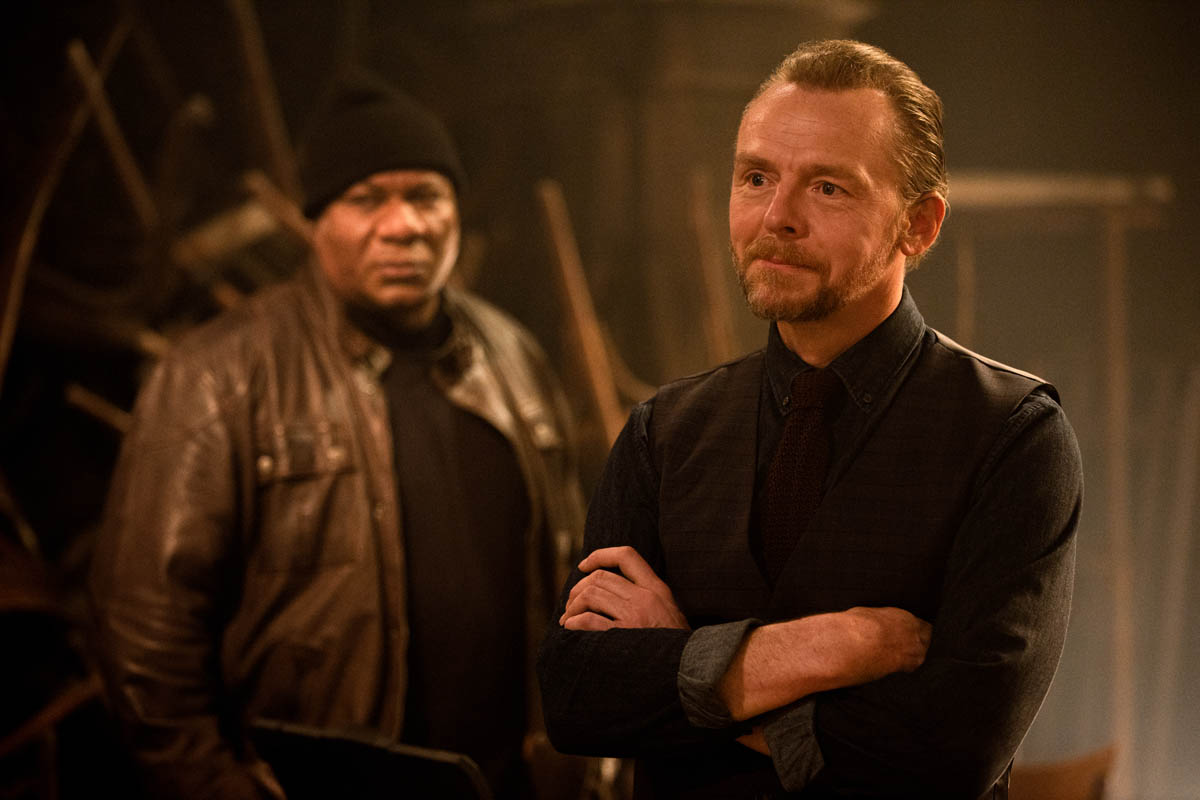
The other thing is not starting the movie on Ethan Hunt as well. We have this great opening prologue with the Russian submarine. Again, quite an ambitious opening. It is a very dense sequence where we are trying to explain the real-world effects of this AI and what it can cause right up front, even though you may not realize that that's what you're learning at the beginning of the movie.
Hopefully, on reflection, you realized that what happens to the Russian submarines – I'm trying not to give spoilers – is going to be magnified and is going to cause Ethan problems later in the movie.
In the second movie, the stakes get dramatically bigger. because We don't really explore the scale of what The Entity can do in this movie. We are sowing the seeds of it and explaining that it's going to be doing something much bigger in the second film.
Anyway, that was the story of the opening of the movie. Compressing even that seven or eight seconds and moving the mission brief up before he presses the tape recorder was a side effect of that editorial discovery.
You mentioned how this film is a very rich meal, and those seven or eight seconds are like breadsticks. If you know you're going to have a rich meal, skip the breadsticks.You're absolutely right. It's not a short film. I would love it to be. When I saw Super Mario Brothers early this year, I loved it because I played their those games with my kids for years. I sat with my daughter, and we both thought it was such fun. I was delighted that it was 90 minutes long.
When you are an editor on a movie like this, you spend day after day watching the entire movie, especially towards the end when you keep seeing QCing everything. Of course, everything takes longer to mix, score, and color correct. There are more visual effects. It's just all longer.
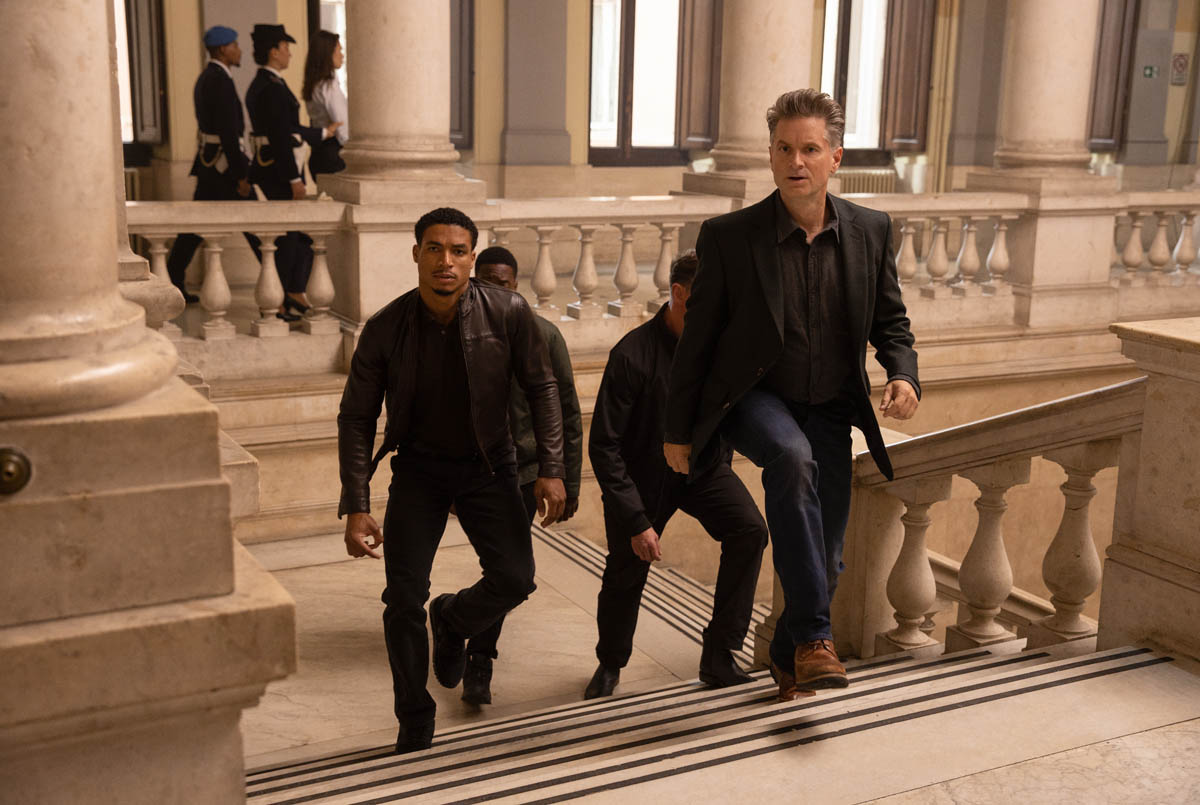
Part of the reason for the length is the way that these films are made – which is a very organic, evolving process of discovery over the two and a half years of production. Also because Chris and Tom wanted to make a real epic story on a grand scale, which you can't really fit into 90 minutes.
If you look at Lawrence of Arabia, The Bridge on the River Kwai, Ben Hur, and Gone with the Wind, they're all massive epics – long sprawling adventures. Dancing Dances with Wolves is another of my favorites. Braveheart, also. If you are in the mood for that, there's nothing quite like it.
I love going to a cinema and getting lost in a movie for three hours. I love it. So, if you are in the mood, it's very satisfying. When you're watching a movie where you are in it the whole time, nothing beats that experience. It's the magic of the movies, getting lost in the story and just loving feeling everything with the protagonist and the characters, wondering where it's going to go.
I think that's what we were attempting. The next one is similarly ambitious and crazy. It's going to be completely epic in scale. You will not be disappointed.
You were talking about how late the title sequence of the movie comes. I wonder if that helps make it feel shorter.That's a very good point, Steve. Here's the note we got from the audience in our previews. The movie doesn't start till the airport – which is when Ethan meets Benji and Luther – because Mission: Impossible is a team film. All of the films were are team stories. We have a protagonist who is Ethan Hunt because Tom Cruise makes protagonist-driven stories – which I feel are easier for the audience to engage with.
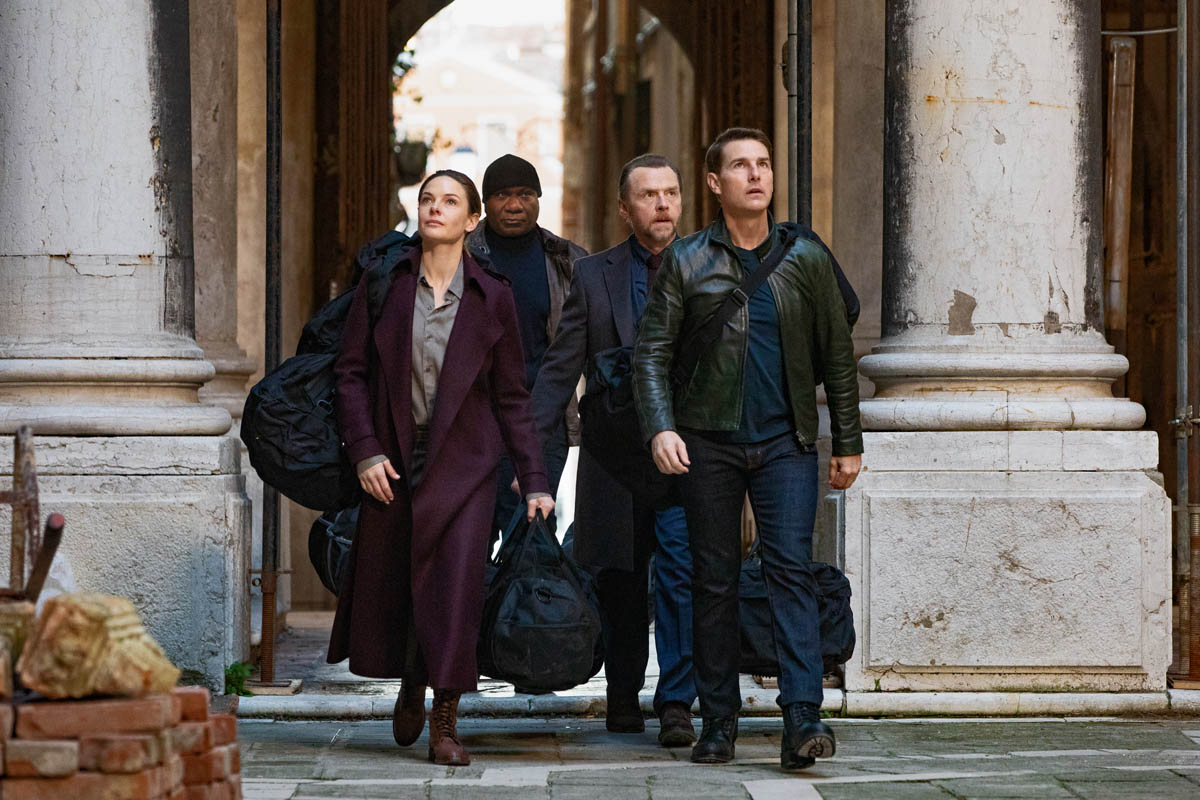
People were telling us, "Look, we like seeing the submarine. We love seeing Ethan and Ilsa, but the movie only starts when we get to the airport." One way of fixing that is putting the opening titles just before the airport because, in the audience's mind, the movie only starts after the opening sequence. A week before we lock, we moved it all down. I have to move all the secondary titles and reposition them all so that they play over the airport. It's better, so it's fine. I like tinkering around with that stuff ‘cause it is in your mind as an editor – you'll know this, Steve – when you are putting the titles, you are quite near the end of the process.
Putting the opening titles there makes the film feel shorter cause there's considerably less of it after as well. You get into the team aspect, meet Ethan and Benji, we've got to find this key and what it unlocks, we've got to do this with the buyer. You feel like you are in a mission-y, caper-y thing at that point. Then you're on that journey, which is great.
The DNI sequence has big close-ups in a conversation with multiple people in that scene. Six people, and that's always so difficult to deal with. You have multiple eye lines. I guess you really can't call it ‘crossing the 180’ because you've got multiple 180s. Can you talk about trying to juggle eyelines where people are looking and the geography?That is a very good question. The same applies to the sequence in the nightclub when they're upstairs in the VIP area where there are all these characters chatting.
Here's an interesting thing. Christopher McQuarrie discussed this with me when we started this. In his evolution as a visual storyteller, it's something that he has come across that appeals to him. He is very precise with his lens choices when filming, when shooting any sequence, especially dialogue. He'll work out which lenses work best for an actor's face. 60mm. 75mm. Usually, it's a choice between 60 or 75 on this film. One of the theories he's considering is that the longer the lens is, the more emotional the shot you get. The wider the lens is, the more information you get.
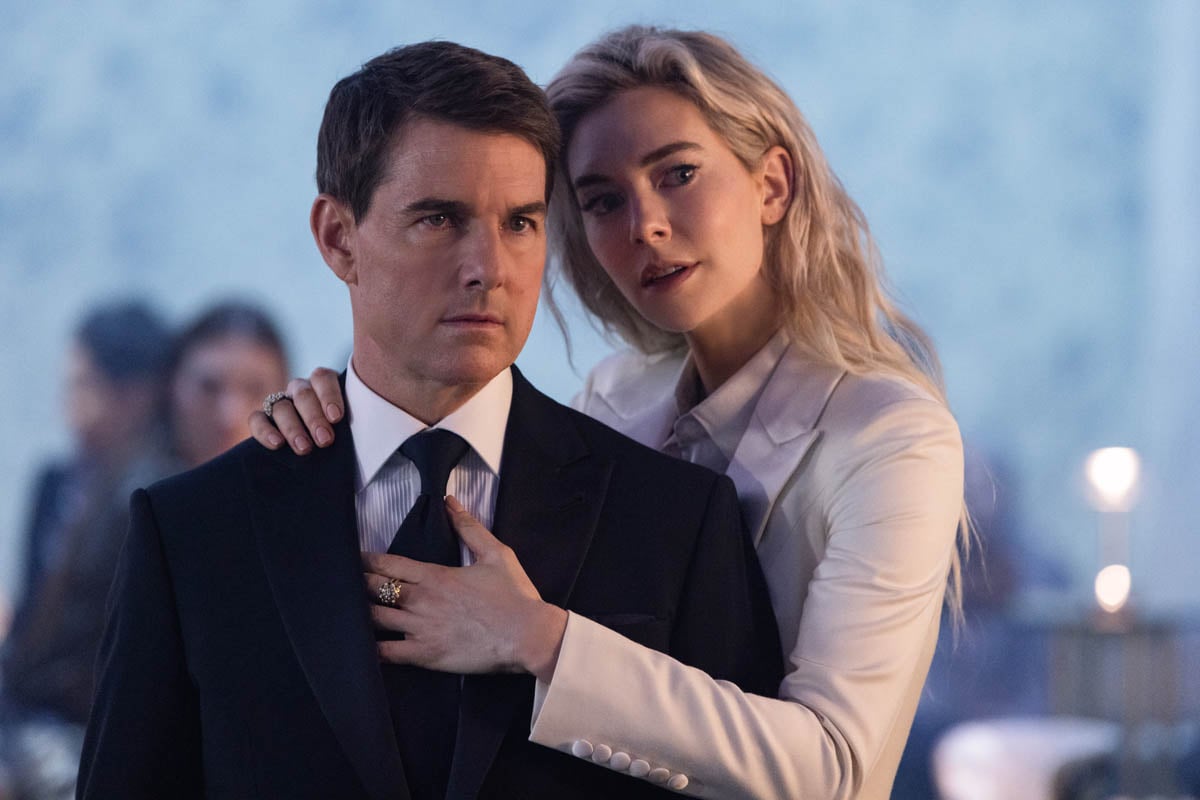
Movies have to be – and are – an emotional experience. The audience is paying their money to buy an emotional experience. They're not buying information. McQ is all about the emotion coming from people's faces. The closer you are to someone's face, the more intimate you are with that character at that moment – the more you are feeling their emotions from how the performer is manipulating the muscles around their eyes and their faces.
That's the fastest way to generate an emotional interaction with a character: be on a closeup. Music is the fastest way to generate emotion from nothing. If you want the audience to feel something immediately, you can start playing music, but you can also have a similar effect by cutting to a big closeup of somebody in some kind of emotional state.
You will instantly start to feel that. McQ feels that wide shots in the scenes are informational, not emotional. You will notice there are very few wide shots in dialogue scenes in this movie. In the DNI sequence, there are maybe two. There's a wide shot when there's a high angle. When Cary Elwes walks around his desk, you get to reveal everybody in the room because it's a high angle looking through the windows of his office.
There is another wide shot where we introduce Henry Czerny as Kittridge. He steps up and walks over to the TV. He does his piece by the TV. Then, he walks back, and we reveal a wide shot of the room for several seconds when he's doing his speech: "None of our allies have willingly whispered one word of it to us, which means there's a global race on to acquire the two halves of this key."
Those wides are all on changes in blocking and movement.Yes. In the scene in the VIP lounge in the nightclub, there is one wide shot at the beginning. It's a bit weedy, but it's there. You've got a tiny glimpse of the geography. What Christopher McQuarrie does is he uses common geography between characters to set up where everybody is in the room.
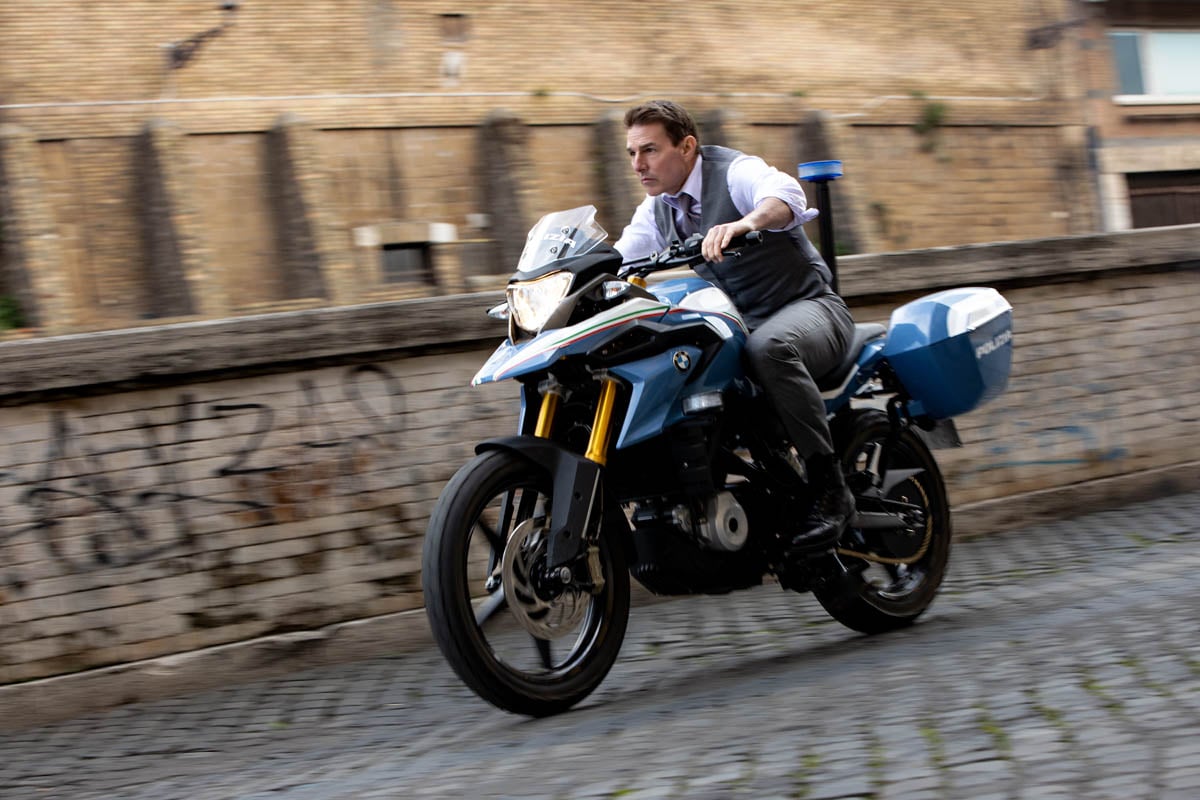
We have these great closeups on Cary Elwes where he stood looking out of his window, but we're on his face. The characters behind him are out of focus, and the camera is hinging around this closeup on Cary. You are feeling his thoughts as the characters are speaking behind him, but you get a sense of the room and then all the coverage.
Some of it is clean singles. Some of it is 135mm where you are really close on the character. We are choosing to cut to characters for very clear pieces of information that the audience has to get – to understand The Entity is destroying the truth as we know it, and everything that's digital is corrupted. For information that you absolutely have to know, we cut to a 135mm closeup of someone talking almost directly at the camera so that you are forced to listen to it.
Then, other times, we're profile on a character talking, and we'll see another character behind. You'll think, 'Oh, that character is sitting over there behind this character.' Then, you will go to this character, and you'll see them also sitting behind this character.
There's a quite a lot of profile shots where, in the nightclub, we see the profile of the Widow and Ilsa behind her. We're also profile on Gabriel, and you see Ilsa sat behind him her. So, you understand that there's common geography. We are relying on the audience to put the geography of the scene together a little bit in their head: to subconsciously do it, so that they're not confused. But that means that we can use very strong close angles on the characters to keep you emotionally engaged. Interestingly, in these dialogue scenes, McQ always overwrites them so that he can modulate the amount of exposition in each scene. Because Mission: Impossible is all about exposition in exactly the right amount when you need it. You know when you are hungry for it.
If there's too much, you can trim it down. You can take stuff out. We did trim out quite a bit of the DNI. Again, we were still getting questions about some of it. We ended up putting in three or four lines of dialogue a week before we locked the edit because people still had a slight question about something. McQ is very sensitive to that.
He is relying on you to tune out of the scene because, as human beings, that is what our minds do. If I'm talking to you, Steve, and I mentioned that yesterday was my mom's birthday. your mind may drift off to think about your mom, right? And it'll take you a few beats to rejoin the conversation with me.
Now, McQ is expecting that to happen in these big dialogue scenes. What we do is deliberately choose to cut on certain closeups and dynamic, strong angles to jolt you out of your thoughts and allow you to refocus on the scene.
We're always cutting when there's a very important word or an important piece of information, but the rhythms of these scenes are built for that. McQ wants you to drift around it, and when he wants you to pay attention, you will. When there's an important piece of information, you’ll perceive it.
Now, if you want to listen to every line of dialogue, it is all very carefully crafted, and it will feed in and enrich your experience of the film. If you tune out for a few beats every so often, it won't matter because he knows that he's got you paying attention when you really need to hear the important stuff.
That is how we've ended up with a lot of close-ups in these scenes. You'll notice – just pay attention to the common geography – how we're trying to build up the geographical position of characters in a scene with either very brief wide shots.
The Department of National Intelligence is a 12 minute scene. It's an enormously long scene to have near the beginning of the movie. There's a lot of intrigue in it, and there's this mystery character who comes in – who is going to cause trouble – so there's suspense as well.
It's one of those scenes that Christopher McQuarrie brilliantly pulls off. It feels exciting and suspenseful as you are watching it because of the stakes and because everyone in the room is powerful and dangerous.

He's just a genius at writing and shooting those. They don't cut together very easily. We revise the edit endlessly. We'll go back to it 50 or 60 times in the process of cutting the film almost daily. At some point, he'll say, "Let's just take 10 minutes." We watch the scene, and he'll say, "Now I'm feeling that this, this, this can be better." We will refine and screen and repeat.
There's not a single easy sequence in this whole film – apart from maybe Ethan getting the mission briefing – because it's one guy and some photographs on the table. All the other sequences are multiple characters – parallel storytelling. Editorially, we're keeping lots of different characters alive and lots of plates spinning. There are lots of things at stake, and the audience has to keep track of who is where and what's happening. Benji's here in the airport, Luther is here, Ethan is here, and Grace is here.
Then, in the car chase in Rome, where's Briggs and Degas? The cops? Where's Paris in the Hummer? How are we intercutting all of this? Same in Venice which has lots of long dialogue scenes. This massive chase where we're intercutting between different people and a big fight scene. On the train, it's just a gigantic puzzle of who we are with – Grace, then the Widow, then Paris. Then we're with Ethan and Benji. Everything starts out long and a bit of a mess. Then, we slowly refine it and discover what the audience actually needs – beat for beat through the sequence. When they're telling us it's too long, we work on that. Originally the scene between the Widow and Kittridge was much longer and had great stuff in it – very humorous stuff – but ended up being collapsed down so that it's just the right amount for you to understand the story.
One of the edits that I loved was the fun edit from the shovel smack to the champagne.Again, that’s just great directing from Chris McQuarrie. Gabriel smacks the driver of the train with the shovel, and then we cut to the champagne glass bubbling and shaking in the foreground ‘cause the train is now going faster than it is supposed to. It's a runaway train, so the whole carriage is shaking. Then, Paris just walks past very nonchalantly in the background as she's making her way down to the back of the train. That is beautiful directing from Chris McQuarrie. I can't take any credit for that. That was totally his idea. It was effortless. All I had to do was make the cut and then trim it by a few frames to make it the right length.
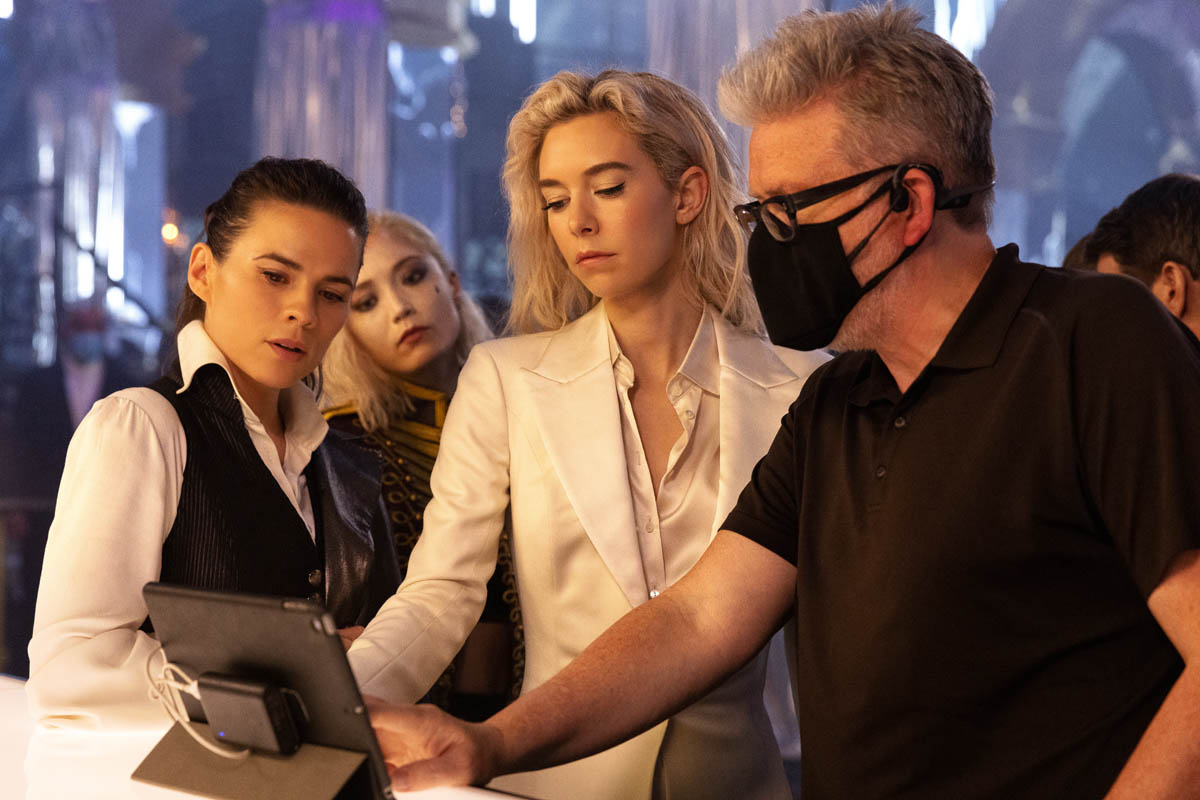 Going back to the mission briefing, you mentioned how easy it was, but I was thinking how challenging it was because you're trying to keep the exposition visually interesting.
Going back to the mission briefing, you mentioned how easy it was, but I was thinking how challenging it was because you're trying to keep the exposition visually interesting.
It's easy in comparison to the other scenes in the film, which are all really difficult – monumentally complicated scenes.
Any editor watching this will feel the complexity and be very glad that they haven't had to do it. Quite frankly, sometimes when I watch Avengers Endgame, for example, and Jeff Ford was juggling all those storylines, characters, heroic moments, and time travel, I just thought, 'My God, this is a masterpiece.'
I cannot believe a film like that did not get nominated for anything, but then neither did any of the Harry Potter films. It's a great shame. I really feel like Avengers Endgame should have won everything like Lord of the Ring's Return of the King won everything – just to say thank you to the enormous amount of goodwill that those filmmakers and the Marvel Studios team created for the industry as a whole. It's a mind-blowing achievement.
The real trick is to be able to watch the film with no sound at all because it's purely a visual medium, obviously. Most of the audience for this film will not speak English. Over half the people watching this movie in theory won't have English as a first language.
We always do a pass where we watched each scene with the sound off to make sure that the rhythms feel right and that the story is visually clear without any dialogue – both dialogue and action scenes. The mission briefing is no exception. You're seeing the choice of shots. We are cutting close to the key - for example - when he lifts the photo to make sure that the key is given a very strong presence in the story, it's almost the whole width of the cinema screen because this is the McGuffin. We want everyone to pay attention.
[McGuffin: an object sought by and motivating the characters, but irrelevant in itself.]
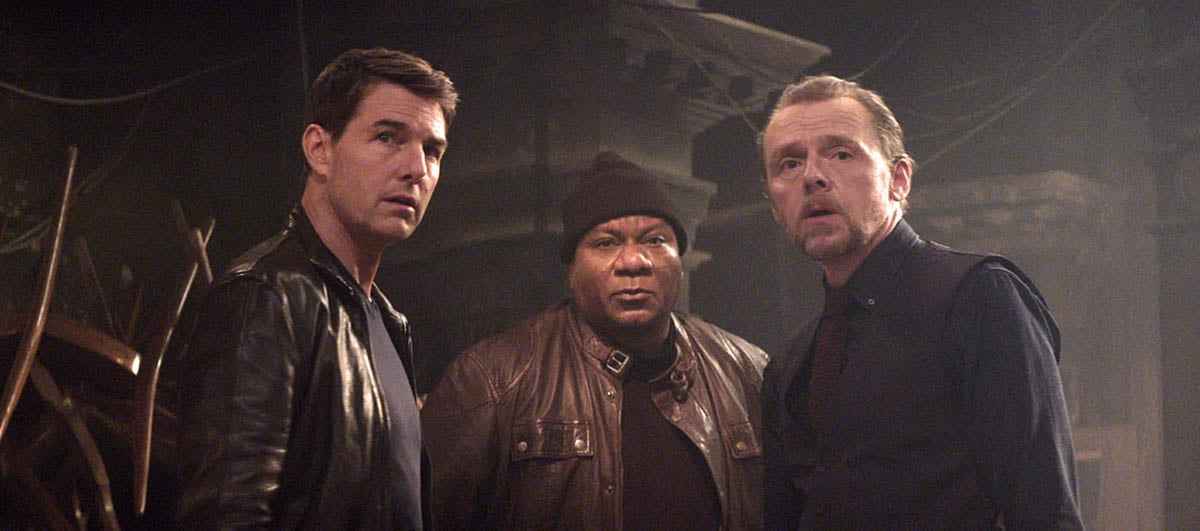
We are using the transitions as Ethan is going through the photos as cut points. He's putting down photographs of the bounty hunters and of Ilsa. We're bouncing off Ethan's reaction. When we first see Ilsa, it's actually off a reaction of Ethan doing a small double take because he thinks, 'I wasn't expecting Ilsa to be in this mission briefing.' We always try to be subjective in Ethan's point of view. We are choosing to cut on certain words of the mission briefing.
'Find the bounty hunters,' and you cut to the bounty hunters. 'You may just find her,' and we cut to Ilsa. We are trying to punctuate everything with closeups to indicate importance. It's very easy to watch, and you're not having to do any work. That's the holy grail for Christopher McQuarrie: for the audience to not have to work to engage in the movie. We do the work for you. We rub your nose in it so that your eye is guided around the frame effortlessly, so you don't have to find details. This is what we want you to look at right now because this is what's important for the story.
The same goes for all the graphics in the airport. Every time we're showing something on Benji's screen, we are rotating the graphics and bringing stuff into the foreground - giving you an orientation of the airport. Benji is underneath, and Ethan's on top. This is where the bag is, all that stuff. Those graphics look easy, but believe me, there are 50 or 60 iterations to get to that point where it is effortless for the audience. Human beings are meaning-making machines, and we're always trying to attribute meaning and emotion to what we see, especially in a narrative. When we're watching a shot, we are instantly trying to get emotion out of it. McQ just wants to give you that emotion and serve it up so that you can just watch the movie, get lost in it, and feel it.
It's not about information. It's all about emotion as much as it can be through the movie. The same was for Top Gun: Maverick. A lot of the lessons he learned from Top Gun as a producer on that movie, he rolled into this in terms of what he wrote and how the audience reacted to the film.
Astonishingly, as I speak to you, we are at 99% on Rotten Tomatoes, which is even higher than Top Gun. I never believed we would be in this position. That is all a tribute to Christopher McQuarrie and Tom Cruise, refining this process of giving the audience an emotional experience.
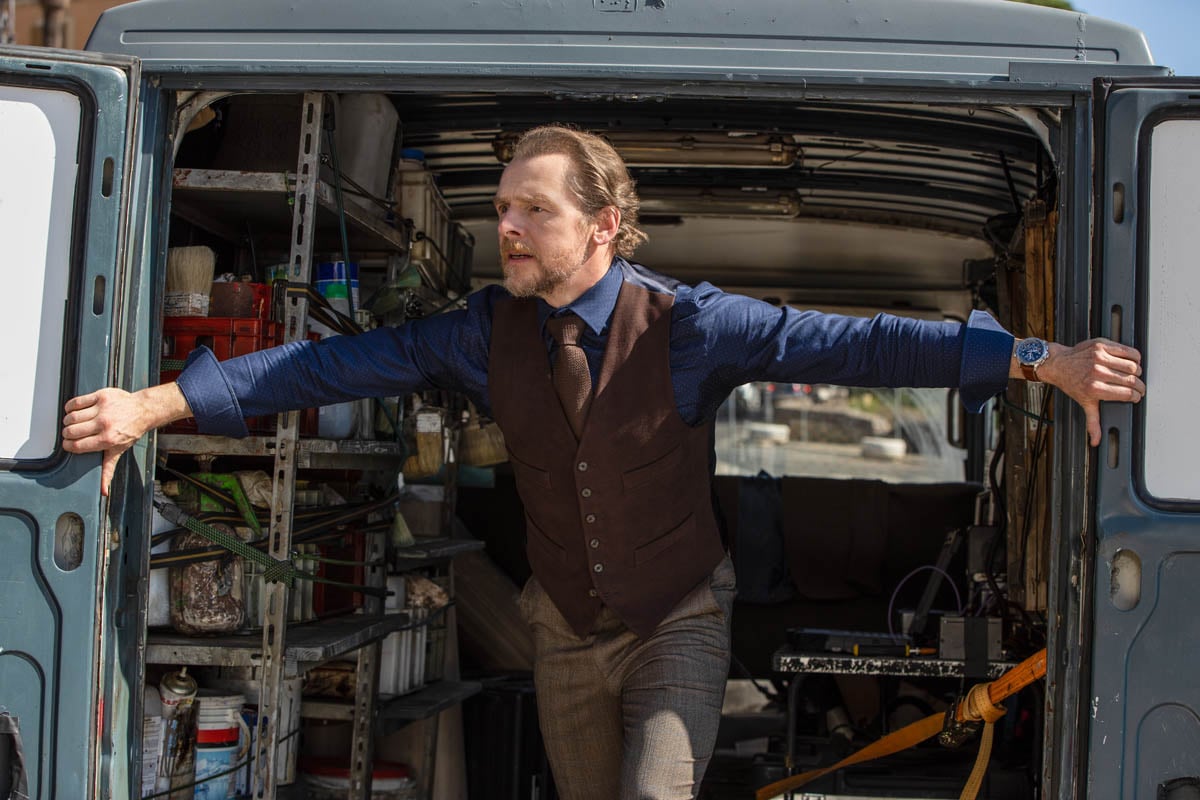
Fortunately, the audiences are responding very positively to that. As somebody who has dreamed of doing this their whole life, it is so rewarding and exciting. Also, knowing that a lot of people come out of this film thinking, 'I would sit down and watch Part Two right now,' or 'I would watch Part One again.'
There will be screenings when Part Two comes out where you'll be able to do a double bill and watch them both. The first one will be a lot more satisfying when you see the second one. We're setting up a lot of stuff that will pay off very elegantly in the next movie.
The end of this movie still feels satisfying. That was something that Tom and McQ were really striving for. I will be fair to them, they cracked it at the very beginning. We never had a problem with people saying, "It doesn't feel satisfying at the end of the film."
MILD SPOILER
Chris wrote and conceived of this idea of the beat between Grace and Kittridge at the end of the film – which I won't spoil – but when you get to that point, it's very satisfying because you've seen a character transformed from a selfish individual to somebody who is putting other people's safety before her own.
She is choosing to join the team. What's great is that you are seeing Ethan's origin story, Luther's origin story, and Benji's origin story through Grace. They all had backgrounds like Grace, and they were all at some point offered The Choice. You will see more of that in the next film, which will be very satisfying for people.
McQ is genius in how he managed to fold all that in so that you are learning about the origin stories of other characters by seeing the character of Grace transform so much in the process of the story.
END SPOILER

What's quite fun is that Ethan says to Grace, "Come with us and be a ghost." Then we cut to this great scene where we see a mask being applied – which is very, very elegant. It has two stitches in it. If you're a filmmaker, you'll see the stitches easily.
Is that a Texas Switch?It's just a very elegant Texas Switch. As usual with Mission: Impossible movies, they had a whole different idea, which didn't work. They had to come up with that on the day.
They spent three or four hours in the morning, spitballing different ways of doing it. Eventually, McQ said, "I know: a Texas Switch," which is so satisfying and very 1930s. It's very elegant old school.
Can you explain what a Texas Switch is?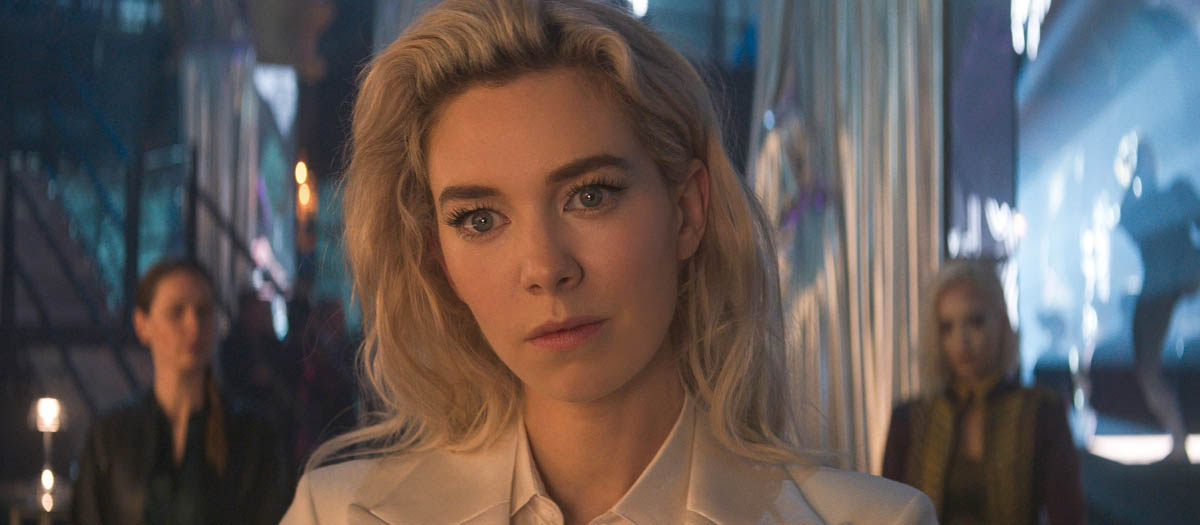
Effectively, it's where one character is switched out for a look-alike actor in mid-shot wearing the same clothes.
We did it in Fallout when Henry Cavill pulls Tom Cruise's air hose out before he does the HALO jump. You see Henry pull Tom’s hose, then you are with Tom, and then you see Henry run out and jump off the plane. The camera is off Henry for a tiny bit. A professional skydiver dressed as Henry Cavill runs out instead.
The Texas Switch in this case in this film is for Hayley Atwell having a blonde wig put on. As we come up behind Benji, we go around her back, hide the transition in the blonde hair, and then Vanessa Kirby steps forward in the same clothes.
Because we're behind on the blonde hair, you don't realize until she walks over to the mirror. Then you're thinking, 'Oh, my God, wait. How did that happen?' It's just very elegant – any filmmaker and editor listening will see it when they see the film.
We always call them "what-if"s. This is what's supposed to happen. This is the what-if scene. We've got a great music cue from Lorne, and our music editor Cécile. We see what's supposed to happen. There's a great transition where you see Ethan launch off the train with a parachute.
Then, you cut back into the same scene, and you realize it was all a "what if." Because the audience is thinking that they're going on a mission, and then Grace interrupts.
You are pulled back into the moment. It's quite amusing because you realize that she just thinks this is a terrible idea, and she's never heard of anything so preposterous. That was always scripted and designed like that.
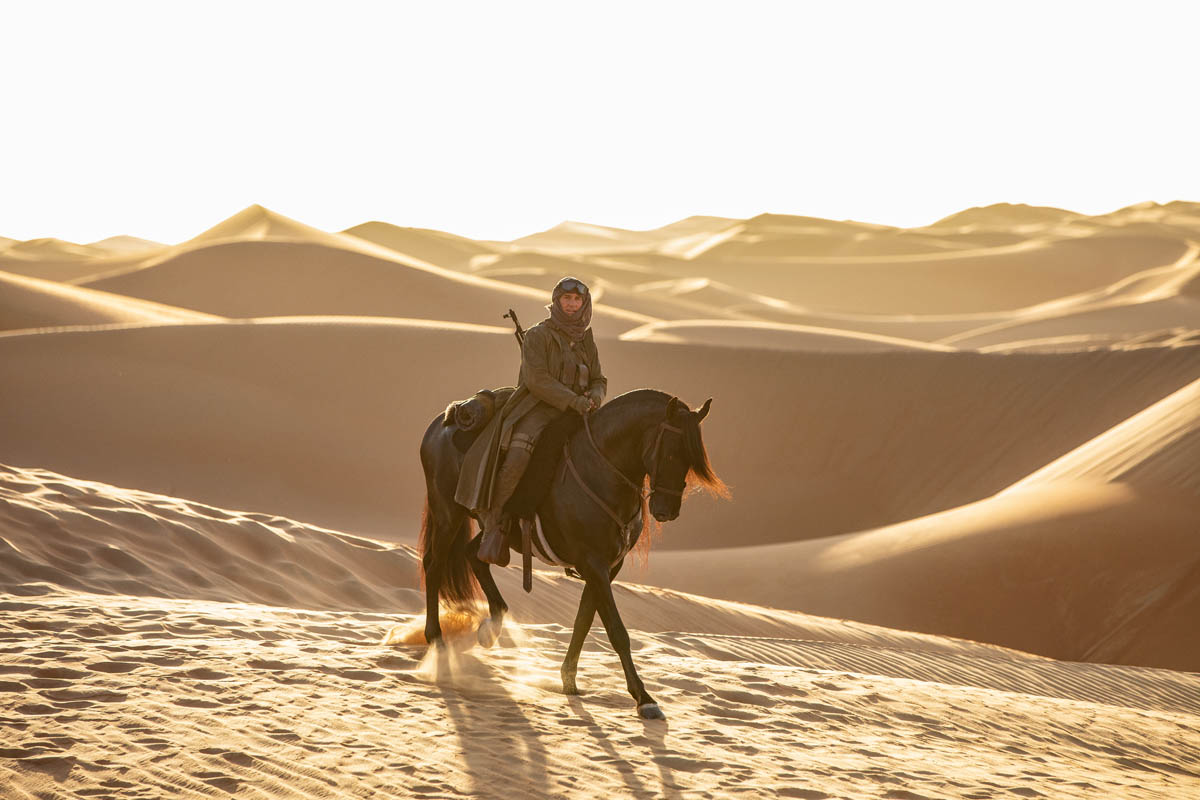 The scene in Venice. You intercut between a sword fight on the bridge and Tom trying to get to that sword fight. Talk to me about 1) the intercutting and 2) deciding whether a scene should be 20 minutes long or two minutes long.
The scene in Venice. You intercut between a sword fight on the bridge and Tom trying to get to that sword fight. Talk to me about 1) the intercutting and 2) deciding whether a scene should be 20 minutes long or two minutes long.
It was much longer as these things always are. Any editor watching will realize that there are a million ways to cut away from the fight. How often do you cut to Ethan? When do you cut to Ethan in the alleyway with Grace? Do you finish the fight with Ethan in the alleyway and have him running longer?
There are so many options. The one sequence that got compressed the most was Gabriel fighting Grace – the knife fight.
That was one where we really did take it down to the bones. I would say it's a quarter of what we had originally because you are more interested in Ethan fighting Paris, which we only trimmed a very short section of that in a narrow alleyway fight. Most of that stayed in – 95% of that.
We had an issue with the audience. One of the challenges was making the sword fight between Ilsa and Gabriel long enough so that it was satisfying and not too short that it was inconsequential. A lot of that had to do with the music cue.
We initially had a driving cue, but it didn't feel like it was slowly building to a climax or that you felt like this is not going to end well. The music cue that's there now is building to an inevitable conclusion. It's not a heroic conclusion. It's a tragic conclusion.
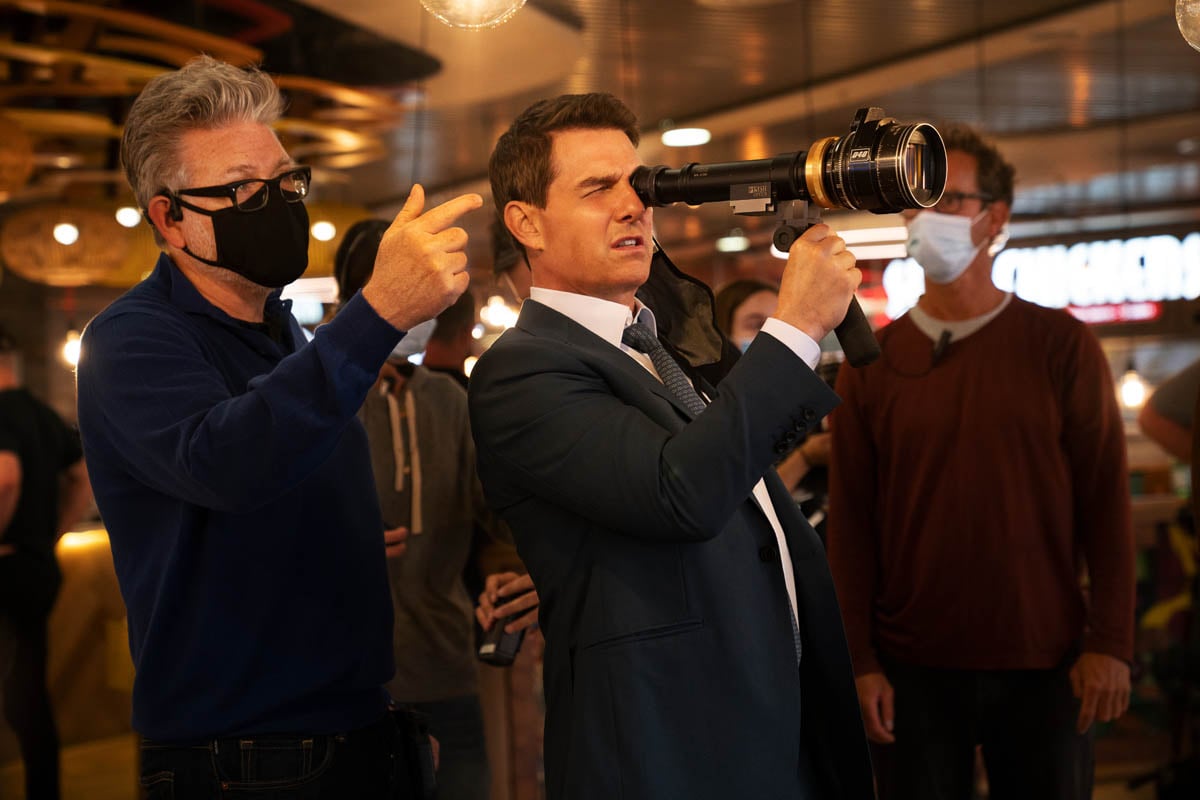 But you don't want the music to give it away.
But you don't want the music to give it away.
No, but you do want the music to be telling you this is building to something. We had a music cue which felt like she was on top – and she is on top for a lot of the fight – and she isn't for a small section.
One of the notes we got from people was that Ethan feels like he's running forever, which was in an earlier iteration. It felt like he was running forever. I'm not exaggerating. We went back to that endless times. We've tried at least 30 different ways of intercutting everything, maybe more. Again, we only settled on it right at the end when the music cue was starting to work properly for us.
Getting the music cue right was instrumental in feeling satisfying and emotional in the way that we wanted the audience to feel when Ethan is running up at the end. When he runs into the white light, he's this silhouette coming out of angelic white light.
It was very rewarding when we finally got that working. I think for the third preview, it was pretty good. People were not giving us notes about it being too long. We had cracked that, but one thing we didn't crack was people having a firm grasp of The Entity as a character.
It's very hard to anthropomorphize a piece of computer code. Our production designer Gary [Freeman] found this incredible Turkish artist. He had come up with this piece of digital art that Gary had seen in an art gallery which became what you see on the wall of the nightclub representing The Entity. It's a circular eye with all the stuff moving around it.
In our last friends-and-family screening, Edgar Wright said there should be some sound or music associated with The Entity. As filmmakers, we thought we had an Entity leitmotif in the music, but we had used it too broadly.
[leitmotif: A musical phrase associated with a specific character or element.]
We had used it more as Gabriel and The Entity's leitmotif. People weren't connecting it with just the AI. My instinct was that we should have a sound when we were on the closeups of The Entity in the nightclub. I was imagining something subsonic, earth-shaking, low-frequency rumble when we were on the closeups, but not anything else.
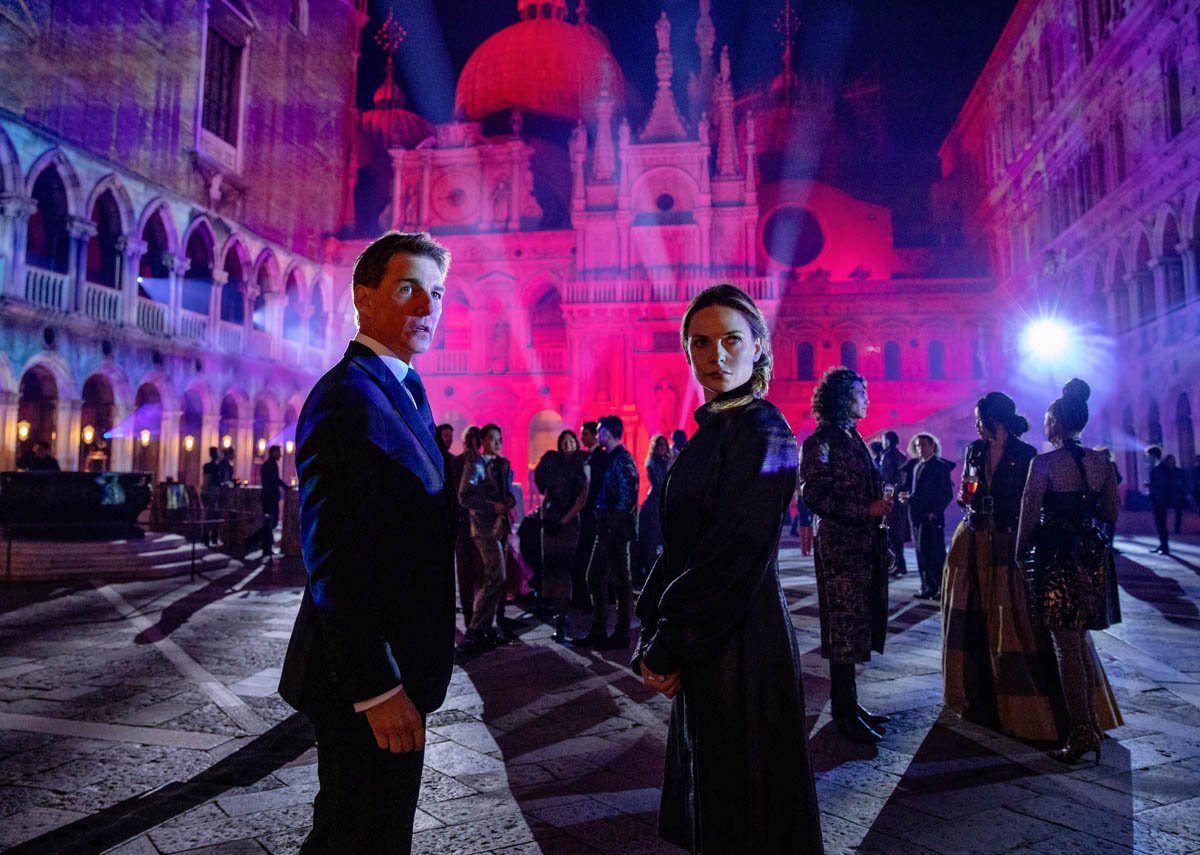
I wanted to feel the intense power coming off this thing, but we went a lot deeper. We said to the supervising sound editor James Mather, "Look, we need a sound. Something digital, but scary, unusual, and unquantifiable." He said, "Listen to this." He got his phone out and scrolled through some voice memos. He played this sound that we all thought: 'That's amazing.' It was this digital clicky sound. He said, "Three years ago, my Sonos soundbar malfunctioned, and this is the sound it made when some HDMI connection was futzed slightly."
It was a digital distortion coming through this soundbar, and he recorded it. He thought, 'Wait, this is cool. If I reboot it, it's never going to do this again.' So he got a proper microphone - as any good sound design will do. He went and recorded it properly on a microphone because he couldn't tap into it. There wasn't a way of feeding the HDMI signal out. He had to record it from the speakers, from the Sonos soundbar. He recorded it for five minutes. I even think he played some of Fallout through it, and recorded that sound. That's what you are hearing – a version of Fallout played distorted through his soundbar.
We had five minutes of it and were able to cherry-pick the best bits of it, cut it up, and put it in the film. Then we thought, 'Wait, we could put it when Ethan stands up in the nightclub and looks around.'
We could put it earlier in the nightclub. We could put it when it's on the submarine. We could use it there, and we could use it when it's pretending to be Benji – when we're with Luther and Benji, and you hear the fake AI Benji voice. It could be present there.
Now suddenly, a load of ideas exploded. We went through the movie. We figured out where to use the sound. It's all because Edgar Wright said there should be some sound design treatment to help anthropomorphize this computer code.
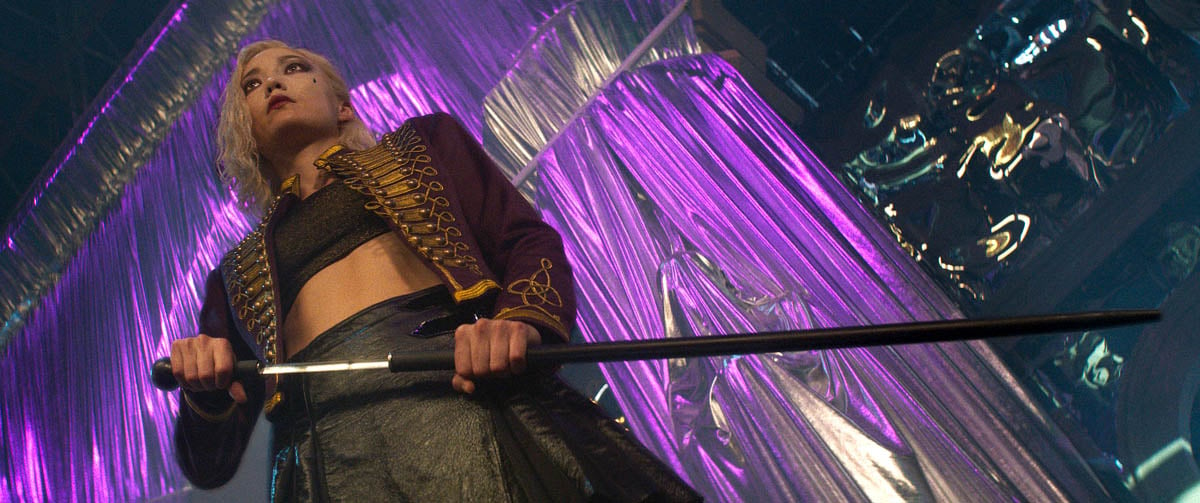
It has a sense of power. You can treat it immersively in the nightclub. That is how we ended up with what you hear in the film now, which I swear made all the difference to the audience perceiving this AI. Of course, we can evolve that into the next film a lot more, because The Entity as an antagonist will be much more powerful in the next film while Ethan is trying to figure out how to save the world. That was all discovered in the last week of the mix, thanks to James Mather and his team.
When we came up with this sound and put it on, all the notes on the film went away. It just became subjective notes, which are about your taste or my taste.
It wasn't just confusion or boredom or pace issues. We knew we had fixed all the problems at this point. But as you know, as any filmmaker or editor listening, you are constantly stress-testing the movie and confronting it. Can this be clearer? Can this be better? Is the audience still asking us any questions or giving us any notes about this? You don't give up. You use the time that you have, but toward the end, when you are really out of time, you are racking your brain constantly trying to think of a way. Can I fix this? Can I improve this?
You used some dissolves coming out of emotional moments. That's when I noticed the dissolves happening – something emotional, and powerful happens. Give the audience a chance to breathe.That is true. We feel those, and the music's also helping at that point. The music gives you a chance to breathe.
The other great thing about dissolves is they can hold your hand as a transition into the next scene happens without you feeling another scene starting. For example, at the end of the desert, we crossfade into the TV screen into the DNI.

You feel like those two scenes are organically linked somehow, which they are because we've come off the key. We've seen Ilsa, and we're going into the DNI.
It's interesting because it's a dissolve in your mind. You are not mentally resetting into a new environment. The desert scene used to play as one whole chunk. We end on a semi-cliffhanger there, go into the DNI, then we see what happened later in the scene.
This helped you feel less like a chapter in the story. It felt as if it was more continuous. Again, we discovered that in the last week as well. Because your podcast is about editorial storytelling, this is perfect since most editors will geek out about this, but for a lot of people, it won't really add up.
They won't be able to understand the power of that in the audience's mind in terms of pacing out the story and keeping the audience in a bit of suspense there. Initially, we used to pay that off at the end of Rome. Imagine if you had not discovered what happens in the desert, and then you go all the way to Rome when Ilsa turns up in the van at the end of the Rome sequence. Then the audience would be asking, "Wait, what?"
She's there in Rome. Then we showed what happened in the desert. That was how it was originally scripted. It was way too late because the audience was thinking about where Ilsa ended up in the desert, and they were just kept in suspense for an hour, which was ridiculously way too long. Even though we took a swing at it, we tried it, but it just didn't work.
We ended up moving that into the middle of the scene between Ethan and Kittridge in DNI. The other thing – if you happen to see the film again – is we use two frame dissolves for flashbacks. Sometimes, one frame dissolves. It's a very, very subtle subconscious effect.
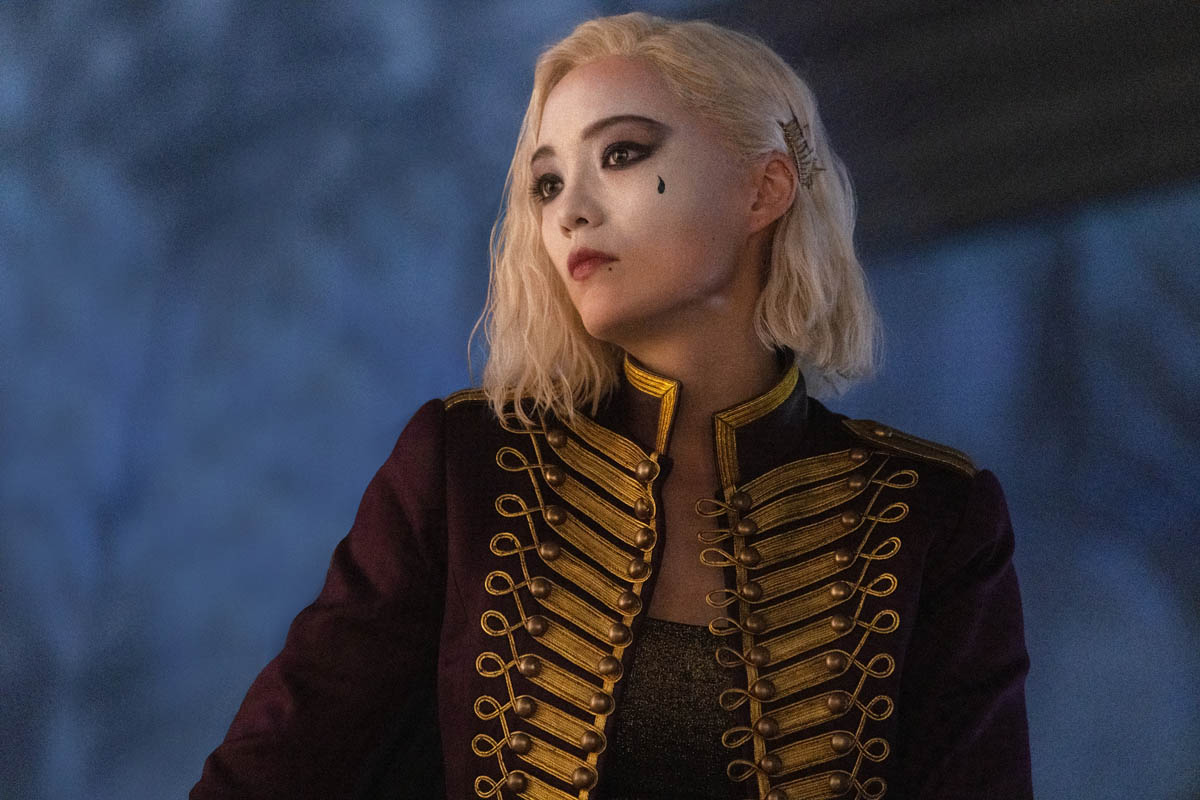
For example, when Ethan is having the mission briefing at the beginning when he's going back into his memories of Gabriel, it's a two-frame dissolve. It just softens the cut. It's not a hard cut, it's a soft cut. It's a subconscious effect, but it's something that McQ was saying, "Let's just try this." I'd never done it before. It never occurred to me, but it was Chris's idea. For example, when he's Ethan’s talking about Gabriel, when he's in the Venice safe house and he's saying, "Somebody I thought died a long time ago," we use these little two-frame dissolves there as well.
Even in the nightclub, when we are cutting from Ethan to The Entity, we have these soft dissolves – the two-frame dissolves. If you want to be super nerdy, step through these moments – we've aligned Ethan's eye and Gabriel's eye so that their eyes are aligned over the dissolve and really nerdy shit like that, which is just for the real film fans who want to study the edit of the movie.
No detail is too insignificant. McQ is always saying, "Oh, let's try this, let's try this, let's get this working," and it all adds up. When you watch the film, you can feel how much love and care have been poured into it. Hopefully, filmmakers will feel that one complex sequence after another, but the audience will just think, 'This is a lot of cool shit. I'm following it all, I love it, and I'm getting my money's worth. It's a great movie. It's an ambitious, big-scale, epic story. I didn't have any problem following it. I was excited, I was leaning in. The music was cool.” But the filmmakers will say, "Whoa, that was a lot of work." They can feel the work that's been put into it. Honestly, if we'd tried to cut this movie in a year, it would not have been as good. We needed the whole two and a half years to do it – to allow us to find the great cut – work with the material and really discover what the movie wanted to be.
I want to point out to the audience two things that you said that I wanted them to think about some more. You were talking about intercutting – the knife fight and Ethan running in the alley – you kept Ethan's side longer, and the knife fight shorter. That pays off later because what happens in the alley emotionally is more important at the end of the film.Correct. You're absolutely right.
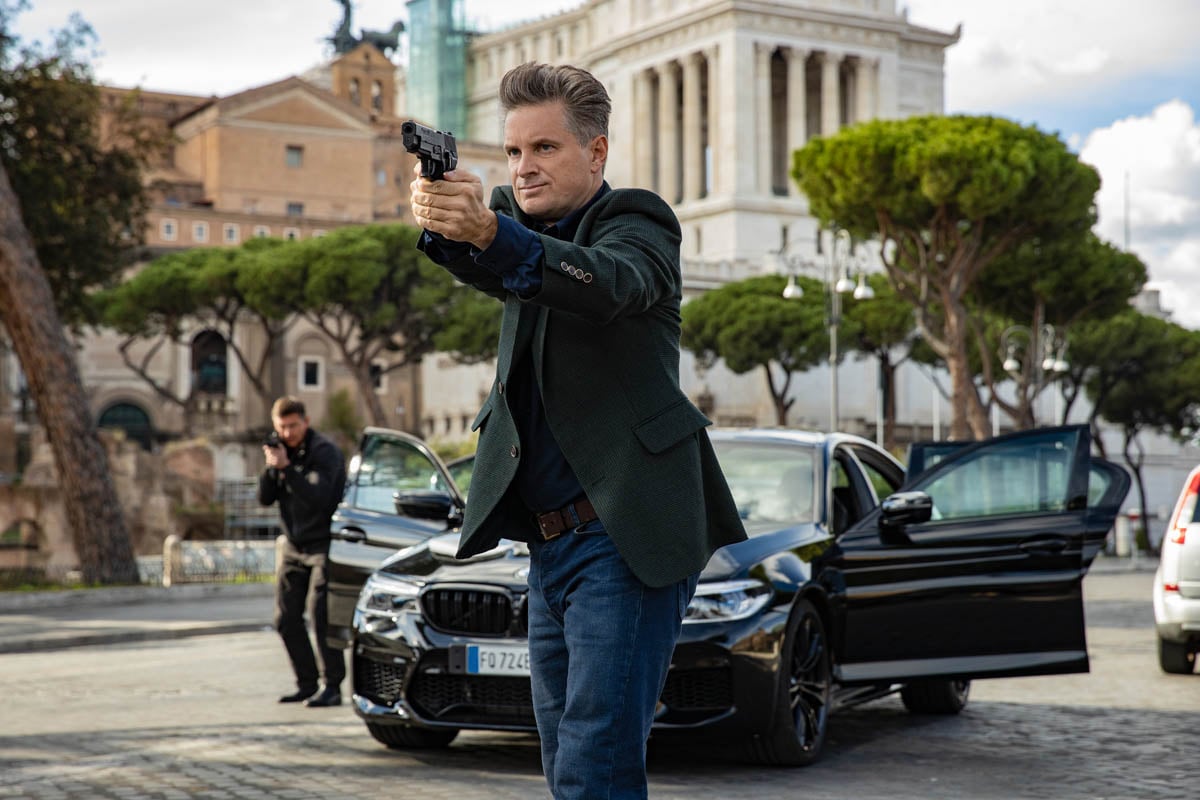 You can't shortchange all of it. You can't say, "Oh, the whole thing's too long. Let's shorten the alley. Shorten the knife fight." Instead, you have to say, "No, the alley's too important to shorten."
You can't shortchange all of it. You can't say, "Oh, the whole thing's too long. Let's shorten the alley. Shorten the knife fight." Instead, you have to say, "No, the alley's too important to shorten."
Yeah, absolutely.
I love all that stuff. Eddie. Congratulations. What a great ride.Thank you so much. I listen every week. I love the show. It's always a pleasure to be on. When I'm watching hours and hours of dailies – and it's action dailies, so there's no sound – I'm always listening to your podcast and the ways people do stuff. It's great to talk to you, Steve. Thanks for your time. Thanks for having me on. I really love what you do, and I can't wait to read your new book.
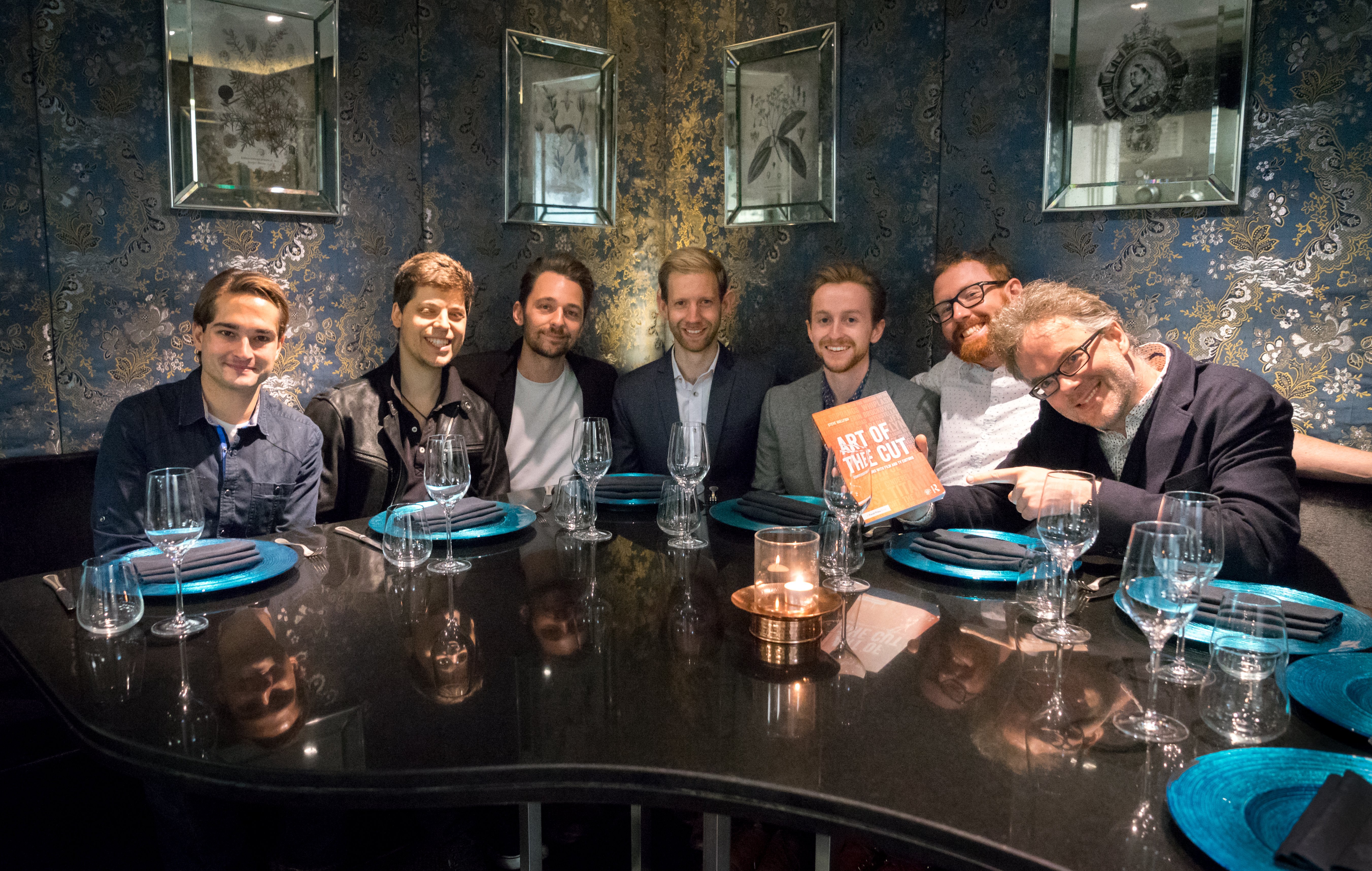 Eddie Hamilton and his copy of the current "Art of the Cut" book... with the Kingsman Golden Circle post team.
Eddie Hamilton and his copy of the current "Art of the Cut" book... with the Kingsman Golden Circle post team.

